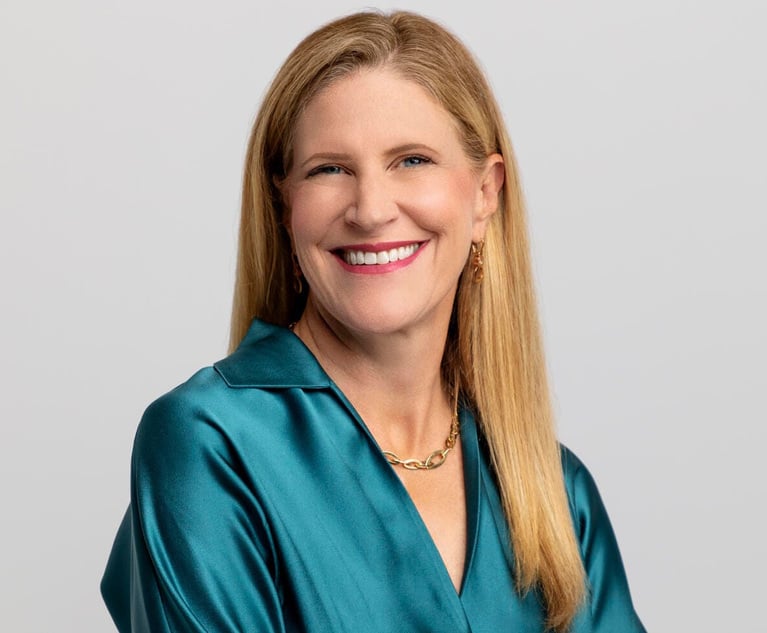 (Photo: ProStockStudio/ Shutterstock)
(Photo: ProStockStudio/ Shutterstock)In-House Counsel Need to Ensure Diversity & Inclusion Program Opens Up Applicant Pool
"GCs are also often caught between legal views of 'affirmative action law and compliance,' that are much different than the business, operational or human resource approach for fostering a diverse and inclusive workplace," Kimya Johnson, senior counsel at Ogletree, Deakins, Nash, Smoak & Stewart in Philadephia, told Corporate Counsel.
July 06, 2020 at 06:03 PM
3 minute read
It may be popular for companies to announce that they are going to hire a certain percentage of women and minorities, however, courts can view this as affirmative action and may weigh favorably in a reverse discrimination suit. Attorneys said in-house counsel should do all they can to make sure their companies' diversity and inclusion programs open up the applicant pool rather than limit it to one group.
Esther Lander, a partner at Akin, Gump, Strauss, Hauer & Feld in Washington, D.C., said some of the confusion over affirmative action and diversity and inclusion initiatives comes from a federal mandate that requires federal contractors to develop an affirmative action plan.
"GCs are also often caught between legal views of affirmative action law and compliance that are much different than the business, operational or human resource approach for fostering a diverse and inclusive workplace," Kimya Johnson, senior counsel at Ogletree, Deakins, Nash, Smoak & Stewart in Philadephia, said in an email to Corporate Counsel.
Under Title VII of the Civil Rights Act, private companies may also engage in a voluntary affirmative action plan, but the plan must be aimed to eliminate a manifest imbalance in a segregated job. Where companies can find themselves in trouble is by announcing specific goals in hiring minority and women candidates. Lander explained that traditionally a diversity and inclusion initiative should be used to expand the hiring pool, rather than exclude a specific race or gender.
"Unless a company conducts what is known as an 'underutilization' analysis to determine the availability of qualified minorities and women within a reasonable recruiting area, they should make clear that these are purely aspirational goals," Lander said.
Christine Hendrickson, a partner at Seyfarth Shaw in Chicago, said the work companies are doing to be more inclusive is some of their most important work and that they want to be able to comply with the law. However, there is more legwork they must do than to make announcements about how many women and minorities they will hire by a certain date.
"One of the things that employers may not be aware of is that you need to establish the basis for undertaking all of these fantastic D&I efforts," Hendrickson said. "This is some of the most important work that we do. You should take a pause to make sure you have complied with all of the legal standards."
She said companies should begin their efforts by conducting a statistical analysis to identify where their gaps are. A statistical analysis of the workforce will help identify where the gaps are to in-house counsel can see how to widen the applicant pool.
Another way to open up the applicant pool is to recruit from minority colleges and affinity organizations.
"Affinity groups are not governed by affirmative action laws or compliance mechanisms. Affinity groups are a "best practice" resource under many D&I initiatives," Johnson said.
This content has been archived. It is available through our partners, LexisNexis® and Bloomberg Law.
To view this content, please continue to their sites.
Not a Lexis Subscriber?
Subscribe Now
Not a Bloomberg Law Subscriber?
Subscribe Now
NOT FOR REPRINT
© 2025 ALM Global, LLC, All Rights Reserved. Request academic re-use from www.copyright.com. All other uses, submit a request to [email protected]. For more information visit Asset & Logo Licensing.
You Might Like
View All
Former Capital One Deputy GC Takes Legal Reins of AIG Spinoff

Khan Defends FTC Tenure, Does Not Address Post-Inauguration Plans

Apple Disputes 'Efforts to Manufacture' Imaging Sensor Claims Against iPhone 15 Technology
Law Firms Mentioned
Trending Stories
- 1Can Passive Technology Change the Impaired Driving Trajectory?
- 2Bradley Arant, Moore & Van Allen Join Partner Promotions Parade
- 37th Circ. Rejects Liability Claims Against Freight Broker's Hiring Choices
- 4Sullivan & Cromwell Signals 5-Day RTO Expectation as Law Firms Remain Split on Optimal Attendance
- 5CLOSED: These Georgia Courts Won't Open Jan. 10
Who Got The Work
Michael G. Bongiorno, Andrew Scott Dulberg and Elizabeth E. Driscoll from Wilmer Cutler Pickering Hale and Dorr have stepped in to represent Symbotic Inc., an A.I.-enabled technology platform that focuses on increasing supply chain efficiency, and other defendants in a pending shareholder derivative lawsuit. The case, filed Oct. 2 in Massachusetts District Court by the Brown Law Firm on behalf of Stephen Austen, accuses certain officers and directors of misleading investors in regard to Symbotic's potential for margin growth by failing to disclose that the company was not equipped to timely deploy its systems or manage expenses through project delays. The case, assigned to U.S. District Judge Nathaniel M. Gorton, is 1:24-cv-12522, Austen v. Cohen et al.
Who Got The Work
Edmund Polubinski and Marie Killmond of Davis Polk & Wardwell have entered appearances for data platform software development company MongoDB and other defendants in a pending shareholder derivative lawsuit. The action, filed Oct. 7 in New York Southern District Court by the Brown Law Firm, accuses the company's directors and/or officers of falsely expressing confidence in the company’s restructuring of its sales incentive plan and downplaying the severity of decreases in its upfront commitments. The case is 1:24-cv-07594, Roy v. Ittycheria et al.
Who Got The Work
Amy O. Bruchs and Kurt F. Ellison of Michael Best & Friedrich have entered appearances for Epic Systems Corp. in a pending employment discrimination lawsuit. The suit was filed Sept. 7 in Wisconsin Western District Court by Levine Eisberner LLC and Siri & Glimstad on behalf of a project manager who claims that he was wrongfully terminated after applying for a religious exemption to the defendant's COVID-19 vaccine mandate. The case, assigned to U.S. Magistrate Judge Anita Marie Boor, is 3:24-cv-00630, Secker, Nathan v. Epic Systems Corporation.
Who Got The Work
David X. Sullivan, Thomas J. Finn and Gregory A. Hall from McCarter & English have entered appearances for Sunrun Installation Services in a pending civil rights lawsuit. The complaint was filed Sept. 4 in Connecticut District Court by attorney Robert M. Berke on behalf of former employee George Edward Steins, who was arrested and charged with employing an unregistered home improvement salesperson. The complaint alleges that had Sunrun informed the Connecticut Department of Consumer Protection that the plaintiff's employment had ended in 2017 and that he no longer held Sunrun's home improvement contractor license, he would not have been hit with charges, which were dismissed in May 2024. The case, assigned to U.S. District Judge Jeffrey A. Meyer, is 3:24-cv-01423, Steins v. Sunrun, Inc. et al.
Who Got The Work
Greenberg Traurig shareholder Joshua L. Raskin has entered an appearance for boohoo.com UK Ltd. in a pending patent infringement lawsuit. The suit, filed Sept. 3 in Texas Eastern District Court by Rozier Hardt McDonough on behalf of Alto Dynamics, asserts five patents related to an online shopping platform. The case, assigned to U.S. District Judge Rodney Gilstrap, is 2:24-cv-00719, Alto Dynamics, LLC v. boohoo.com UK Limited.
Featured Firms
Law Offices of Gary Martin Hays & Associates, P.C.
(470) 294-1674
Law Offices of Mark E. Salomone
(857) 444-6468
Smith & Hassler
(713) 739-1250







